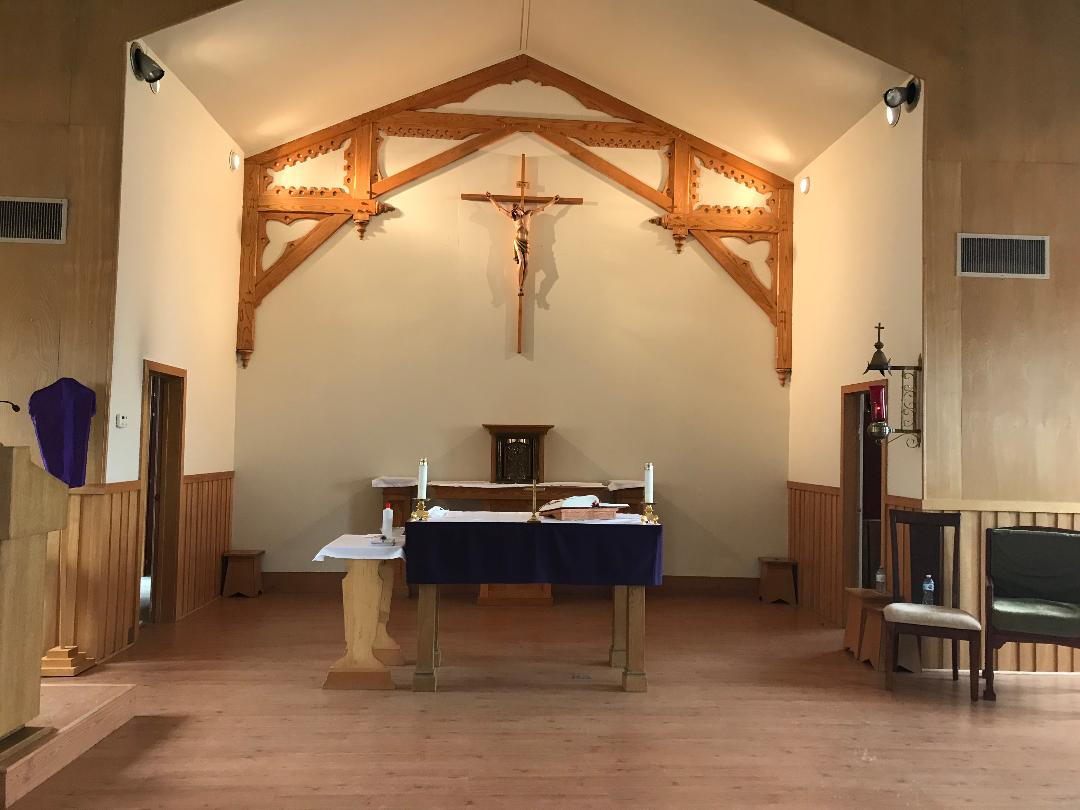- Home
- Our Community
- Our Faith
- Our Ministries
- Parish Life
- Bulletin
- Contact Us
- Search

'Speaking in Tongues' Is Hallmark of Parish Life
On a Sunday morning, a steady stream of parishioners files through the glass doors of possibly the most bustling church in the Archdiocese of Toronto. Latecomers with toddlers in tow scan the crowded pews for a seat. As the procession ends, the priest reaches the presider's chair and raises his right hand to his forehead.
"W imię Ojca i Syna i Ducha Świętego," Fr. Janusz Blazejak OMI intones as he makes the Sign of the Cross. The Polish-speaking congregation responds in unison, "Amen."
At St. Maximilian Kolbe Parish in Mississauga, this scene occurs eight times every weekend — six times in Polish and twice in English. These liturgies would have been inconceivable when the Diocese of Toronto was established 175 years ago, and not just because present-day Mississauga was mostly farmland in the mid-19th century or because Latin was the language of the Church. Like Toronto itself, the local church lacked the multicultural character it exhibits today.
Fast forward to 2017, and visitors to the Archdiocese of Toronto website will find a parish search tool directing them to churches offering Sunday Mass in one of 33 different languages.
Celebrating cultural diversity is one of the "Four Essential Priorities" of the Archdiocese's Pastoral Plan, issued by Cardinal Thomas Collins in February 2013. This blueprint for the future describes the Archdiocese as "one of the most culturally diverse dioceses in the world."
"This richness of diversity is one of our greatest gifts to be nurtured lovingly and responsibly," the plan states. "We will work to maintain a deep connection to the local church, while encouraging our culturally diverse parishes to share their successful models of collaboration, worship and outreach."
One objective of the Pastoral Plan was the creation of a translation ministry. In 2013, the Archdiocese's communications department assembled a network of freelance translators and proofreaders. The translators, who were recommended by clergy from their respective ethnic communities, are fluent in the specialized language of the Church — an area where commercial translation agencies struggle. Moreover, as parishioners, they approach their work as a ministry.
"Polish is the primary language for a lot of our parishioners," says Magda Hofman, who attends St. Maximilian Kolbe and has worked with the translation ministry since 2013. "I think in that language, so I pray in that language. It's a lot easier to have a conversation with God in the language that's most comfortable for you."
She noticed a difference when the Archdiocese started distributing materials she translated.
"Now when the Cardinal releases a message, the older people will read it," she says. "There's a lot more conversation going on. My mom will tell me about it."
Following a Saturday afternoon First Communion class, Magda ushers students back to their parents in the vestibule. The pastor bids the families farewell as they leave.
"Do zobaczenia jutro na mszy," says Fr. Blazejak with a smile — see you at Mass tomorrow.
When the Archdiocese celebrates its bicentennial in 25 years, will these children belong to parish communities even more diverse than today? Of this much they can be certain: the Church will speak their language.
Kris Dmytrenko is a Communications Coordinator in the Office of Public Relations & Communications.
